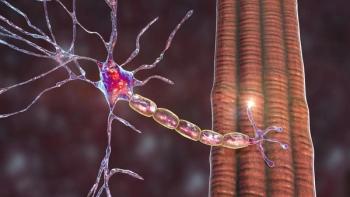
What is the Clinical Role of Induction Therapy in Locally Advanced Squamous Cell Cancer of the Head and Neck?
Induction chemotherapy has led to improved survival and organ preservation. Combining induction therapy with other treatment modalities is critical for treating this complex disease and attaining optimal outcomes.
ABSTRACT: Induction chemotherapy has led to improved survival and organ preservation. Combining induction therapy with other treatment modalities is critical for treating this complex disease and attaining optimal outcomes.
Head and neck cancer specialists agree that induction chemotherapy has a place in the treatment of locally advanced squamous cell cancer of the head and neck, but they differ on its exact role in this setting.
For Everett E. Vokes, MD, induction chemotherapy should be reserved for patients with advanced nodal stage disease. There are not enough randomized trial data to support its more general use, he said. Dr. Vokes is John E. Ultmann Professor of Medicine, and Radiation and Cellular Oncology at the Pritzker School of Medicine at the University of Chicago Medical Center.
Chemo-radiation
Presented by DR. EVERETT VOKES
Marshall R. Posner, MD, said he would use induction chemotherapy in patients at high risk for locoregional or systemic failure, including those with intermediate-stage and hypopharynx cancer. Dr. Posner is medical director of the head and neck oncology program at Boston's Dana-Farber Cancer Institute and an associate professor of medicine at Harvard Medical School.
The physicians discussed some of pros and cons of induction therapy in SCCHN during an educational session at ASCO 2010.
Concomitant Chemoradiation vs Induction Chemotherapy
Dr. Vokes said that concomitant chemoradiotherapy is the current standard of care for most patients with advanced head and neck cancer. "Cure and organ preservation are our primary treatment goals. The optimal treatment strategy currently is not defined, but chemoradiotherapy is the first option for most patients," he said.
Nevertheless, Dr. Vokes said that induction chemotherapy in addition to concomitant chemoradiotherapy can be useful in high-risk patients with N3 disease and/or advanced nodal disease, depending on performance status and comorbidities. But its use is "not yet evidence based," he emphasized.
Induction chemotherapy
Presented by DR. MARSHALL POSNER
Induction chemotherapy has the distinct theoretical advantage of early systemic therapy wherein all therapeutic compartments are addressed, but the locoregional effect may be limited. Concomitant chemoradiotherapy, on the other hand, addresses primarily the locoregional compartment. It sensitizes the tumor cells to the administration of radiation but may necessitate underdosing the remainder of the body, Dr. Vokes said.
Several trials have validated concomitant chemoradiotherapy as the standard of care. Single-agent and combination chemotherapy regimens have been used; most are cisplatin-based but some are taxane-based, he said.
In one trial, the five-year overall survival (OS) rate among oropharyngeal cancer patients was 15.8% in patients who received radiotherapy alone vs 22.4% in patients who received carboplatin and 5-fluorouracil (5-FU) in addition to radiation therapy (P = .005; J Clin Oncol 22: 69-76, 2004).
In an RTOG phase III trial that randomized patients to three different treatments-radiation alone, radiation plus cisplatin, or radiation plus cisplatin/5-FU (PF)-the median three-year OS was 12.6 months for patients treated with radiation alone and 19.1 months with the addition of either chemotherapy regimen (ASCO 2006 abstract 5517).
Recent data from RTOG 97-03 showed 2-year OS rates of between 60% and 70% with combined concurrent chemoradiotherapy using a variety of regimens (J Clin Oncol 22:2856-2864, 2004). "So it may not be about specific drugs but about treatment intensity and the concept of sensitization," he said.
Induction Chemotherapy: Equivalent to Chemoradiation
"The role of induction chemotherapy was debatable in the early 1990s, but during the last 15 years, randomized clinical trials have provided level 1 evidence that cisplatin and 5-FU induction therapy is equivalent to chemoradiotherapy," Dr. Posner said.
In addition, several studies have shown that induction therapy is significantly more effective in terms of survival and organ preservation than surgery with or without radiotherapy in locally advanced SCCHN (Br J Cancer 83:1594-1598, 2000; ASCO 2006 abstract 5517; J Natl Cancer Inst 88:890-898, 1996; J Natl Cancer Inst 86:265-272, 1994; J Clin Oncol 12:385-395, 1994; J Natl Cancer Inst 96:1714-1717, 2004).
These studies provide direct evidence that induction with cisplatin and 5-FU improves survival in locally advanced disease by reducing the risk of locoregional failure and the rate of distant metastases. "These data refute the notion held by many that PF induction merely selects patients who will do well with radiotherapy because the locoregional control with PF was notably better than with radiotherapy alone. By direct comparison, there is an independent additional effect of [induction chemotherapy] on locoregional control," Dr. Posner said.
For more on this topic, see "Induction Chemotherapy and Sequential Therapy for Locally Advanced Squamous Cell Cancer of the Head and Neck in Clinical Practice," Marshall R. Posner, MD, ASCO 2010 Educational Book, page 205.
He said he would use induction chemotherapy in patients at high risk for locoregional or systemic failure, including those with intermediate-stage and hypopharynx cancer. "I would treat patients even with N1 and early N2A disease because they have a high rate of distant metastases and locoregional failure. And I would certainly treat patients with N2B or N2C disease, bulky N3 disease or any N3 disease, unresectable disease, and T4 primary tumors with induction chemotherapy," he said. The level 1 data with TPF induction chemotherapy are significantly better than PF induction chemotherapy and strongly suggest that we can expect TPF to be better than chemoradiotherapy alone in high and intermediate risk patients.
A trio of large phase III trials comparing PF induction to chemoradiotherapy, have all shown that both strategies are equivalent with regard to laryngectomy-free survival and locoregional control. They also showed that PF induction is less toxic than cisplatin-based chemoradiotherapy, he said (ASCO 2006 abstract 5517; J Clin Oncol 12:385-395, 1994; J Natl Cancer Inst 101:142-152, 2009).
Induction chemotherapy also reduces tumor volume, preparing patients for definitive radiotherapy with improved functioning afterwards, Dr. Posner said. It has established efficacy in resectable disease and organ preservation, improved survival, improved locoregional control and distant metastases in advanced disease, and allows for intermediate assessment of response and prognosis to adjust the intensity of post-induction therapy.
Two pitfalls to induction chemotherapy are acute systemic toxicity and the fact that survival improvement is related to disease site and stage. In addition, duration of treatment with induction chemotherapy is increased. "This can lead to a change in tumor biology that needs to be addressed as we treat these patients," Dr. Posner said.
Whatever modality is ultimately settled on, he emphasized that the decision must be made by a multidisciplinary team. "For the very advanced patient with hypopharynx cancer, we can give surgery followed by chemoradiotherapy, chemoradiotherapy with bolus cisplatin, chemoradiotherapy with carboplatin plus 5-FU, chemoradiotherapy with cetuximab [Erbitux], and sequential therapy with TPF induction chemotherapy followed by chemoradiotherapy, and nodal surgery," Dr. Posner said. "We have to look at the patient, the disease, and the prognostic factors, and come to an individualized treatment plan for that patient."
Taxanes take center stage in head and neck cancer
The development of taxane-based induction chemotherapy has been a major advance in the last five years. Large randomized trials have unequivocally demonstrated the superiority of taxane-based three-drug regimens-docetaxel (Taxotere) plus cisplatin plus 5-FU, or TPF-in locally advanced SCCHN, Dr. Marshall Posner said at the ASCO 2010 educational session.
Three studies that compared docetaxel-based TPF with PF (GORTEC 2000-01, TAX 323, and TAX 324) demonstrated significant improvements in overall and progression-free survival, locoregional control, and organ preservation with TPF compared with PF (J Natl Cancer Inst 101:498-506, 2009; N Engl J Med 357:1695-1704, 2007; N Engl J Med 357:1705-1715, 2007).
"Of note, there was less toxicity with TPF in these three trials, fewer treatment-related deaths, and no effect on the patient's ability to receive post-induction treatment," Dr. Posner said. "Stomatitis, deaths within 30 days, neutropenia, and treatment delays were actually less than we saw with PF."
Newsletter
Stay at the forefront of cutting-edge science with CGT—your direct line to expert insights, breakthrough data, and real-time coverage of the latest advancements in cell and gene therapy.











































